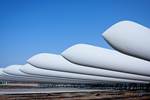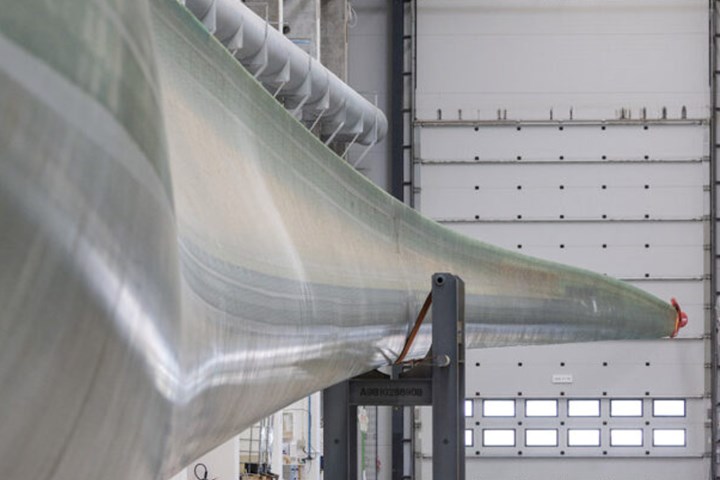Siemens Gamesa, Airborne develop automatic preforming robot system for offshore wind blades
Danish-funded ALMA project furthers collaboration, adds new functionality, advanced sensor systems and digital twinning for reduced man-hours, waste and cost per blade.
A consortium of Siemens Gamesa (SGRE, Zamudio, Vizcaya Spain), Airborne (The Hague, Netherlands), the University of Southern Denmark (SDU, Odense) and the Technical University of Denmark (DTU, Kongens Lyngby) have secured funding in the ALMA project (2023-2026) to develop an automated preforming robot system (APRS) for the layup of composite materials in the manufacture of large offshore wind turbine blades. The system will lay up the preform plies automatically to replace the current manual process.
As described on the ALMA project page, the APRS will decrease the time that large, expensive wind blade molds occupy and will improve the quality of the blade. A reduction of 120-140 man-hours per blade is expected, as well as reduced material waste, which will lower the production cost of wind blades by 92,500 DKK ($13,460) per blade.
A reduction of 120-140 man-hours per blade is expected, as well as reduced material waste, which will lower the production cost of wind blades by 92,500 DKK ($13,460) per blade.
The ALMA project strengthens the collaboration between Airborne and SGRE that started in 2022 with a project to build and supply a large, automated system for the manufacturing of offshore blades. This project is aimed to further accelerate the technology, adding new functionality, advanced sensor systems and digital twinning.
The APRS is combined with three key hardware components: a fabric material dispensing system, an end effector and a robot on a (movable) gantry. The system is coupled with state-of-the-art inspection software that can be used with preforming technology during the layup process for accurate detection of wrinkles and ply placement. The whole process will be simulated in order to pave the way for a digital twin that enables testing and validation of production cycles before the actual blade production. The product is to be integrated into SGRE wind turbine factories. This will enable SGRE to transition toward an automated blade manufacturing process, increasing blade output while reducing production costs. The ALMA project and proposed solution will thus be an enabler of preform technology at SGRE production sites.
“This program is a great extension of our collaboration with Siemens Gamesa, one of the leading companies in the wind energy sector,” says Marcus Kremers, CTO of Airborne. “It fits nicely within the strong trend that we see in wind and the wider composites industry, which is to automate the layup process with the requirement to stay with the current fabric materials which are affordable and qualified. And that is what we solve with our automated ply placement technology, which allows for easy, fast and flexible automation without the need to change material — it can process the wide variety of materials that are used in industry today.”
Related Content
-
Novel composite technology replaces welded joints in tubular structures
The Tree Composites TC-joint replaces traditional welding in jacket foundations for offshore wind turbine generator applications, advancing the world’s quest for fast, sustainable energy deployment.
-
MingYang reveals 18-MW offshore wind turbine model with 140-meter-long blades
The Chinese wind turbine manufacturer surpasses its 16-MW platform, optimizes wind farm construction costs for 1-GW wind farms.
-
Update: THOR project for industrialized, recyclable thermoplastic composite tanks for hydrogen storage
A look into the tape/liner materials, LATW/recycling processes, design software and new equipment toward commercialization of Type 4.5 tanks.
















